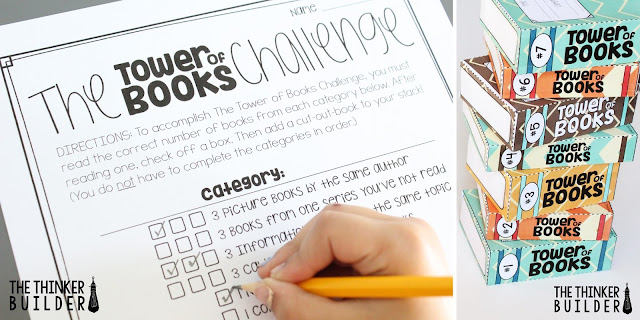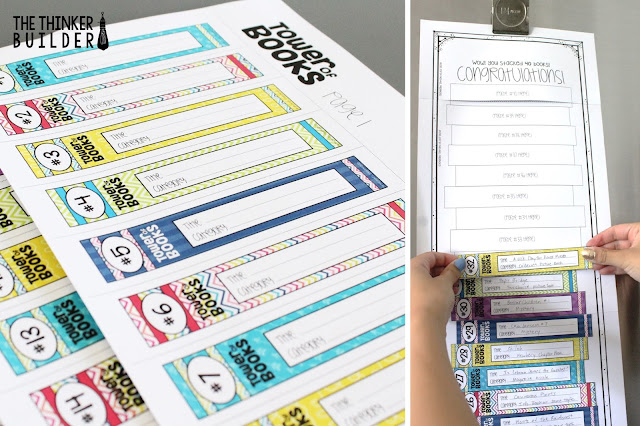As teachers, it's one of our basic, core wishes for our students.
Some students come to us with a hunger for reading. Give them a thick novel (or better yet, let them bring their own) and they'll happily sit and read for as long as we allow. All day even. We can pretty much guarantee these students fall asleep at night with a book tented across their chest, having squeezed out as much of it as their droopy little eyes could handle.
Other students "like" to read. And others "don't mind" reading, if they don't have anything better to do. Others will read at school but rarely do it at home. And still others avoid it like the plague.
I want to share five ideas to help get all these other students reading more at home.
To be clear, I agree with J.K. Rowling when she said, "If you don't like to read, you haven't found the right book." Helping students find the "right book" is irreplaceable. So the ideas that follow are meant to support this quest, not replace it. Concrete, fun tools to motivate students.
1. Personal Book Bracket
You may have seen the idea of a book tournament, often done in the spring running parallel to March Madness, where books are selected and placed into a bracket-style tournament. Students then read some or all of the books and vote for the winners of each match-up.Why not streamline it into a personal book bracket? Give each student their own mini-bracket, maybe an 8-book tournament or even just a 4-book tournament, and let them choose the books. They can read the books at home and the bracket acts as a bit of fun motivation to complete a book and move on to the next one until all books in the bracket are read and the student can decide on their "champ."
Be sure to grab the book bracket template you see below!
And if students work on another book bracket afterward, you can even have them combine the two brackets so the champs from each bracket "compete" against each other to be the grand champ.
2. The Tower of Books Challenge
Tower of Books is an engaging independent reading challenge, great for replacing a stuck-in-a-rut reading log. (You know the one... that chart with good intentions of ensuring students are consistently reading but eventually becomes a roll-of-the-eyes chore void of any student motivation. Yeah, that one.) The Tower of Books Challenge is based on two core ideas: to widen students' reading choices and to provide a fresh and motivating way to keep track of what they read.Students are given a reading list with numerous genres and categories of books they must read to meet the challenge. For each book students read, they create a book cut-out from the printable files, fill in their book information, and begin forming their… Tower of Books!
Towers can be built with 3D book look-a-likes, each one representing a book read from the category list, or they can be built with 2D book spines.
You can read more about my Tower of Books Challenge HERE, or check it out in my TpT shop HERE.
3. Book Connection Chain
For students who like puzzles and solving codes, a Book Connection Chain might be just the motivation tool for them.The basic idea is to make connections between the books students read. The puzzle-solving part comes into play by having students connect the books they read in different ways AND to connect them into a loop. Look at the picture below.
This chain used six picture books, connected in lots of different ways, from characters to plot events to genres, and more. Some connections are rather obvious and some are deeper. The tricky part is connecting the chain back on itself, completing the loop. It often takes moving the books around into different orders to get the connections to work. If they're clever, students usually don't need to select books with a certain connection in mind prior to reading them. Rather, they can read what they want, and then work on the connection chain afterward.
Be sure to grab that connection chain template from the picture!
4. Top 5 Bookshelf
For students who love lists, or who love to rank things, ask them to keep a "top 5 bookshelf" at home.In a Top 5 bookshelf, students keep their current five favorite books in one place in their home. If they don't own the book (if it's a library book, for instance), they just record the book title on a note card as a placeholder.
The key is the changing nature of a favorite five books. As students read more books, their favorites can change, and their Top 5 shelf would change as well.
You could even request students to snap a pic of their Top 5 Bookshelf to share with the class!
5. "Real Life" Book Clubs
Book clubs or literature groups might already be part of your reading block schedule, but if so, they are often pretty full of expectations and assignments. Absolutely nothing wrong with that.But what I'm suggesting here is a type of book club that's meant to encourage more at-home reading, and to do that, I've found it helpful to mirror "real-life" book clubs, in which a group of people read the same book and then get together to chat about it. That's it. No extra assignments or tests or projects.
Allowing students to form a small group with a book everyone involved wants to read can go a long way to building in some natural peer accountability. I've found it's helpful to set up some simple norms to help the group run smoothly but without mucking it up with a bunch of strict rules. For example:
- Set one reading assignment at a time and agree on it together.
- Do the reading before the group meets.
- Bring your book to the book club meeting.
- Mark one part of the reading that would be interesting to chat about.
* * *
Want some tips to give to parents about how to support their child's reading at home?
I've got a post full of practical tips and a handy printable brochure you can check out right HERE.









